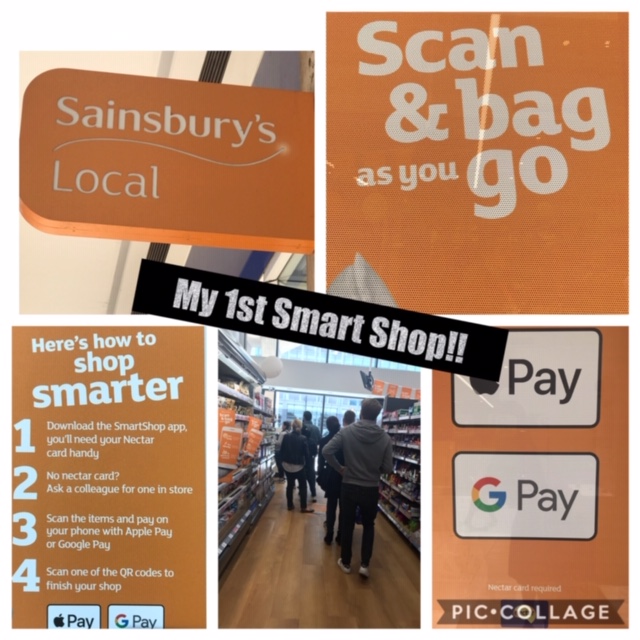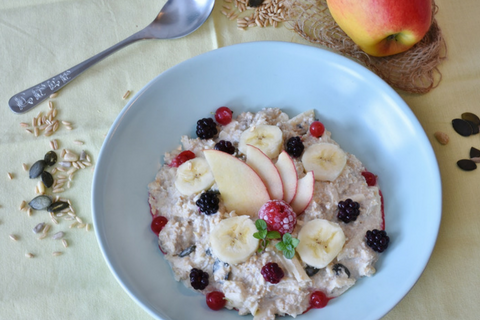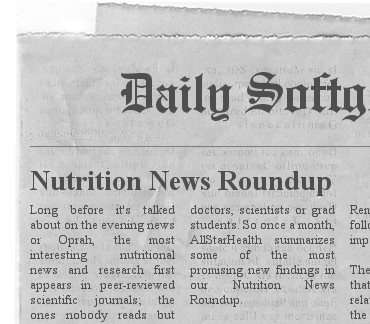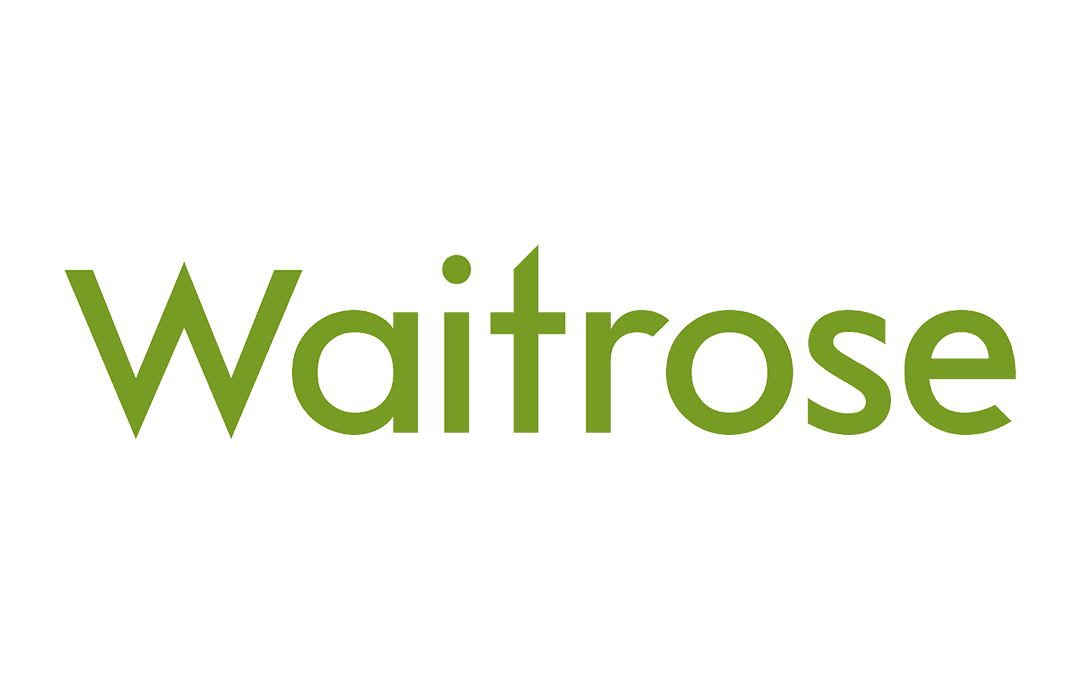
by Tanya HAFFNER | May 15, 2019 | Retail, Hot Topics in nutrition, Thoughts
My first SMART SHOP 🛒 ever!
A taste of the future of grocery shopping! 🍏 🍊 🥛
Have you experienced it yet? If so how was it? This is my short story….May 2019!
“I can do this”…I told myself as I hear my forever forward thinking colleague Howard @see_research tell me that @Sainsburys @SainsburysNews have a new smart shop in Holborn – must be tried!
Forget ones inbuilt fear about new tasks I tell myself, especially new tech tasks….which is always a slow learn for me, where I normally have to do things 2-3 times before it clicks! Instead, need to muster all life skills accumulated over many years to overcome said fear, gain new experience, stay ahead & be more informed about retail advances!
Swapping 👠 for 👟 after our meeting I bounce over to the new store with curiosity & best enthusiasm possible for joining in…thankfully greeted by helpful friendly young millennial providing immediate, necessary, app set up assistance & source of calm!
After 10 mins setting up the store app on my 📱 (not as easy as I had hoped with millennial help but thankfully unlike the much slower paced android next to me 😢 ) I was finally ready to go & shop like I never shopped before & looking forward to experiencing no checkout & a speedy exit!
I watched & copied those before me! I test scanned an 🍏 . I scanned the bar code on the apple shelf, then picked up the apple & placed it in my bag. Easy! “Whoopee” I say when camera scans it immediately. I briefly remind myself of a talk at my sons school the week before which inspired me to embrace tech +++ + as our near future is artificial intelligence in every which way possible. Suddenly feeling more positive about my chances with that! What fun! 😀
Onto the next shelf I tried to scan the bar code on the shelf in front of a pack of mixed fresh beans. Error appears! 😆Oh dear. You have to fail before you really succeed, right?! I discover that for packaged goods you have to scan the bar code on the pack – not the shelf! A little awkward & challenging when holding the product & my shopping bag & in need of at least one whole hand to take the scan on the iPhone & another hand to hold the product. But must not be defeated!
I scan two more items successfully. I then suddenly think about my next meeting & the need to run. I smugly look at the long queue in front of me & start to proceed to check out & pay on the spot on my app & search for the QR code on the shop wall to indicate Im done & leaving. Only snag….my apple pay linked to the app doesn’t accept @Barclays @BarclaysUK debit cards yet ,which explains the difficulties that even my helpful millennial did not realise at set up!
A bit frustrating having to leave & not complete the new task- but having no time for the store queue the store manger kindly takes my items back.
I did however leave thankful to @Sainsburys overall for the new shopping experience. It was of course a faff to set up the app even for the millennial assisting me and it obviously has a teething problem with some banking cards. However, once set up & you know where to scan I can only imagine it becoming second nature to us all very quickly.
On the negative side I can see us having no human contact as we go out to shop which adds to my concerns about the deterioration in social skills as tech inevitably increases in our lives. A big responsibility for the big tech corporations & us all to address, I think.
On the positive side I can visualise all kinds of new nutrition tech supporting this app that may analyse our shop as we scan, potentially feedback to us as we shop & help nudge us towards healthier & more sustainable shopping baskets! How amazing would that be!
Watch this space… I have no doubt! If you have experienced smart shop or have any further thoughts Id love to hear! In the meantime happy 😃 healthy shopping everyone however you choose to do it right now! 🛒

by Tanya HAFFNER | Mar 9, 2018 | Retail, Hot Topics in nutrition, Media in context, The Nation’s Health, Catering/Out of Home
This week, Public Health England published a new report into calorie consumption, calling on food makers to cut calories in the products to help in the combat against obesity. The findings were discussed by the BBC, the Daily Mail and the Guardian, among many others.
Key points of the report include:
- New evidence highlighting overweight or obese boys and girls consume up to 500 and 290 calories too many each day respectively
- A challenge to the food industry to reduce calories in products consumed by families by 20% by 2024
- This will include 13 types of savoury, processed foods such as pizzas, ready meals, ready-made sandwiches, meat products and savoury snacks.
- Food companies can achieve this by either 1) reducing portion sizes, 2) reformulation of products or 3) signposting to lower calorie options already available.
According to PHE, “If the 20% target is met within 5 years, more than 35,000 premature deaths could be prevented and around £9 billion in NHS healthcare and social care costs could be saved over a 25 year period.”
Alongside the report comes the launch of the One You campaign, encouraging adults to consume 400 calories at breakfast, and 600 each for lunch and dinner, plus a couple of healthy snacks in between. This comes as adults consume 200 to 300 calories in excess each day.
- Major high street brands are partnering with PHE on the campaign (including Greggs, Starbucks, McDonalds and Subway), helping show consumers which meals can meet the 400-600-600kcal mark. Total daily calorie intake recommendations remain at 2,000kcal for women and 2,500kcal for men.
- The Only You Easy Meals app gives ideas for what could fit into this (also see our examples listed further below).
This new plan from the Government comes on top of the sugar levy which comes into force next month and the sugar reduction programme. Read more about both here
Behind the headlines: the Nutrilicious dietetic view
The battle against being overweight or obese is an important one:
- In the UK, two thirds of adults and one third of children are classed as ‘overweight’ (Body Mass Index over 25kg/m2) or ‘obese’ (Body Mass Index over 30kg/m2).
- Overweight and obesity can have a serious impact on health and increase the risk of:
- Type 2 diabetes
- Musculoskeletal disorders (like osteroarthritis)
- Cardiovascular disease
- Some types of cancer (such as breast cancer, endometrial and bowel cancer)
- Psychological problems
Source: World Health Organisation
While we hope the new plan by the government will help with the obesity battle, there are some points to consider when going through the plans:
- Cutting foods by 20% in calories – This is a voluntary target and so unfortunately there is no guarantee food companies will actually respond to these targets. However, PHE have stated that if there is little response, they will ‘name and shame’ the brands that are not co-operating and they would then consider asking the Government to legislate.
- The 400-600-600 tip
This could be a useful way to help people stay more on track at mealtimes; it is simple approach and easy to remember. Here are a here are a few examples from the Only You App
|
400kcal breakfast
|
600kcal lunch |
600kcal dinner |
| Banana porridge made with milk and oats with raspberry mash |
Beans on wholegrain toast with mushrooms, tomatoes and peppers |
Chicken and vegetable parcels with noodles or potatoes |
| Traffic light omelettes with mixed peppers |
Salmon and cucumber wholewheat wraps with watercress
|
Lentil and vegetable cobbler |
| Toasted oats with yogurt, apple and grapes |
Wholegrain pitta pizza with with mushrooms, tomatoes and light mozzarella |
New potato and tuna salad |
However, while it’s suggested just as a guide, men require more calories than women… is it appropriate to apply such advice to both? Using the 400-600-600 calorie rules, this would leave men with 900 calories left within their recommended daily allowance for snacks. Would you say this was the best approach?The “guide” element in our view will need to be emphasised much more in the communications.
- Nutrient intake
It’s good to be calorie aware and know rough guides, but sometimes the higher calorie option could be healthier than the lower calorie option. What calorie counting does not do is consider nutrient intake of a meal nor the balance of different foods in a meal, which is a major drawback of the approach.
To give a breakfast example, a white bacon roll (about 290 calories) offers little beneficial nutrition but could come in at lower calories than a bowl of porridge topped with a piece of sliced fruit and a handful of nuts (about 400 calories). The latter offers a healthier source of protein and fats from the nuts compared to processed meat, plus a portion of fruit. The porridge would help contribute to our fibre much more than the roll – and in the UK, the current average fibre intake needs to increased by 60% to be meeting the UK recommendations.
So while we may reduce calorie consumption, we may then lose something else that is good for our health (e.g. fibre). The approach in fact has the potential to be counterproductive if we choose a meal that is lower in quality, causing excess snacking if, for example, you didn’t have enough fibre in the meal to fill you up.
It’s great that the supporting app and website help teach more about healthy choices; hopefully those who decide to follow 400-600-600 will take the advice on board. It will be important for PHE to monitor the uptake and how healthy the choices will be and for us as public health advisers to be aware of these results.
- There is the suggestion and worry that such rules with calories could create unhealthy relationships with food for some.
- Finally there is no magic bullet to the obesity crisis. It continues to require large scale urgent multi-pronged approaches to be overcome and we must not loose sight of this which know from unanimous research including the game changing McKinsey Global Institute Report on overcoming obesity, that has yet to be truly taken on board by any overweight nation.
Takeaway message
This is an important new report and initiative from Public Health England which overall we welcome and hope alongside other initiatives already started as well as those yet to come will help to make a difference to the current obesity crisis. We look forward to supporting the initiative in the context of what is also eaten in our communications alongside other strategies dependent on the audiences that we are influencing. In the meantime we also hope that this initiative will be communicated and closely measured by PHE in the context of the above concerns as WHAT we eat is of great value to our overall health and weight, not just how much we eat.

by Tanya HAFFNER | Dec 4, 2017 | Retail, Food category comment, Media in context, The Nation’s Health, Surveys and insights
Each week we analyse some of the hot headlines in health and nutrition news. This week cheese; obesity & diabetes/cancer risk; and sugar reduction in Kellogg’s cereals.
HEADLINE 1: A piece of cheese a day keeps the doctor away
Picked up in the news this week by the Daily Mail, The Express, The Sun, The Independent and The Guardian is the suggestion that eating cheese could reduce the risk of heart attacks and strokes.
This is based on a meta-analysis of studies which concluded that consuming 40g of cheese per day reduced the risk of heart attack by 14% and stroke by 10%.
Behind the headlines: the Nutrilicious dietetic view
While cheese lovers are likely to have rejoiced, there are limitations to the research on which the headlines were based. The lack of randomised controlled trials included within the meta-analysis means that no causal relationship can be assumed between eating cheese and risk of heart disease. There are far too many factors which could interfere with the results.
Interestingly, there are previous large studies that have found no association between heart disease and eating cheese. Again, it can be hard to prove that it is the cheese eating that is causing the effects.
The harm that eating too much cheese can cause to health is well documented. Although it is a good source of protein, calcium, phosphorous and vitamin B12, it can also be high in saturated fats. Having too much saturated fat in the diet can increase levels of LDL cholesterol in the blood, which is an established risk factor for heart disease. A 30g portion of cheddar cheese (a matchbox size) contains 6.5g saturated fat (over a quarter of the reference intake for saturated fat – 20g). It can also be quite easy to go above this recommended portion size.
Some cheeses can be high in salt and there is a lot of evidence to show that too much salt can increase the risk of high blood pressure, another risk factor for cardiovascular disease.
Cheese can be enjoyed as part of a healthy diet if eaten in moderation and can provide a valuable source of various nutrients. Sticking to the recommended 30g portion size and opting for lower fat varieties such as lighter/reduced fat cheddars, cottage cheese and ricotta, can help ensure we don’t exceed our recommended maximum amount of saturated fat.
Moreover, foods such as low-fat yogurts and lower fat milks can also provide us with calcium and protein (two of the key nutrients found in cheese) but provide less saturated fats (as well as fewer calories, which would be helpful for those trying to lose weight).
For more information, go to British Heart Foundation and the NHS
HEADLINE 2: Diabetes is a key factor in WORLDWIDE cancer surge
The Express, The Sun and The Daily Mail reported on a finding that diabetes and obesity have been linked to causing cancer.
Researchers found that people with a high BMI (defined as above 25kg/m) who also had diabetes were behind 5.6% of new cancer cases globally, affecting 792,600 people in 2012. The method used was through assessing the increase in new cases of 18 cancers based on the prevalence of diabetes and high BMI in 175 countries (using data about BMI and diabetes in 2002 and cancers recorded in 2012).
Behind the headlines: the Nutrilicious dietetic view
This is an interesting study as it is the first study to have looked at the combined effect of having diabetes and obesity on cancer risk. Whilst the headlines alert us to the finding that over 5% of cancers were attributable to diabetes and cancer, there were significant differences between various groups of people, regions and types of cancer which should be noted. These are discussed in the original study. For example, cancers attributable to diabetes and being overweight were nearly twice as common in women (496,700 cases) as they were in men (295,900 cases).
It should be noted that there were limitations of the study. It is questionable whether the 10-year gap used between recording diabetes and high BMI to cancer incidence is entirely appropriate to enable conclusions to be drawn, as recognised by the researchers.
What we understand already is that obesity is certainly a risk factor for cancer. Analysis conducted by the World Cancer Research Fund has found that being overweight (BMI 25kg- 29.9/m) or obese (BMI 30kg/m and above) increases the risk of 11 types of cancer.
The Diabetes UK website outlines the link between diabetes and cancer. Some of the complications associated with diabetes can increase the risk of cancer. However, well-managed diabetes can help reduce the risk of any complications. Diabetes UK have given their thoughts on this study and stated that, “Diabetes doesn’t directly cause cancer, but this study adds to the evidence that having diabetes can increase the risk of certain types of cancer.”
The main message to take home from these headlines is that the increasing prevalence of obesity and diabetes may lead to an increase in risk of certain cancers. Maintaining a healthy weight, eating well, keeping physically active, not smoking, and not exceeding the government guidelines for alcohol consumption can all help lower the risk of diabetes and cancer.
For more information, go to Diabetes UK and WCRF
HEADLINE 3: Kellogg’s to cut sugar in kids’ cereals by up to 40%
Also in the news this week is the announcement that Kellogg’s will cut the sugar levels in children’s cereals by up to 40%. This was reported by the BBC, the Daily Mail, the Evening Standard, The Times and The Sun.
Kellogg’s have said they will reduce sugar levels by 20-40% by the middle of 2018 for Coco Pops, Rice Krispies and Rice Krispies Multi-Grain Shapes. They are also going to stop making Ricicles from January 2018, due to the amount of sugar in the cereal, and are putting a stop to on-pack promotions aimed at children on Frosties.
Behind the headlines: the Nutrilicious dietetic view
This is a very positive and encouraging move from Kellogg’s as the battle to reduce sugar consumption in the UK continues.
In March this year, officials at Public Health England called on food firms to cut sugar by 5% by the end of this year and by 20% by 2020. The Scientific Advisory Committee on Nutrition currently advise that free sugar intake in the UK should account for no more than 5% of our daily energy intake. Advice for the different age groups is as follows:
- Children 4-6 years – no more than 19g free sugars per day (5 teaspoons)
- Children 7-10 years – no more than 24g free sugars per day (6 teaspoons)
- Children 11 years + and adults – no more than 30g free sugars per day (7 teaspoons)
Although not the highest source of sugar in our diets, cereals do contribute to daily intake, with the most recent National Diet and Nutrition Survey highlighting that cereals are responsible for 5% of the added sugar intakes of adults and 6-8% of that of 4-10-year olds and teens. In our blog post last year A Health Check on New Breakfast Opportunities we discussed the need for more breakfast options to offer lower sugar choices and so this certainly is a positive step forward. With gradually a lesser number of options available that are high in sugar, it may be less overwhelming for consumers to make healthier choices.
Here is how much sugar is currently in the Kellogg’s products and how much they are to be reduced by:
- Coco Pops – 9g sugar per 30g serving. To be reduced to 5.1g per 30g serving (40% reduction, changing from about 2 teaspoons of sugar to just over 1 teaspoon).
- Rice Krispies – 3g sugar per 30g serving. To be reduced to 2.4g per 30g serving (20% reduction, changing from ¾ teaspoon of sugar to a little under 2/3 teaspoon of sugar).
- Rice Krispies Multi-Grain Shapes – 6.3g sugar per 30g serving. To be reduced to 4.5g per 30g serving (30% reduction, changing from about 1.5 teaspoons of sugar to just over 1 teaspoon)
A step forward to reduce the sugar content of any foods available on the market can only surely be a positive one.
For more information, go to Kellogg’s – Sugar and Breakfast Cereal and SACN 2015 – Carbohydrates and Health Report

by Nutrilicious | Feb 10, 2016 | Retail, Interviews
We recently worked with Waitrose on an exciting health and nutrition project where we truly saw the impact that a dietitian in retail can have on public health and sales. Moira Howie, Waitrose’s Manager in Nutrition and Health kindly agreed to tell us more about her journey. Here are the highlights.
When the opportunity to be a retail nutritionist came my way… I couldn’t resist. I knew that what people ate impacted their health so what better way to bring about changes than by helping to shape their weekly shopping basket. It sounds simple and easy but in reality the general public are quite resistant to change and those good intentions don’t always translate into practical action.
Adopting a multi-faceted approach to helping consumers choose a healthier diet yields the best results. The early creation of an online nutrition advice service containing a wealth of topical information helped to grow and build consumer trust in accessing sensible and practical advice. Consumers seem to struggle in getting information that meets their specific dietary needs therefore bespoke shopping lists are always in demand. New technology has changed the shape of this information from paper to screen to phone but the requests remain the same “help me know the things I can eat as opposed to the things I can’t!” This essence of practical help extends through all publications from inspirational recipe cards carrying our Living Well logo to weekly and monthly columns on topical health concerns. But communication in itself is never going to solve the wider public health problems.
The changes required are more fundamental ranging from policy to product. Developing nutrition policy and setting strategic direction to deliver the ambition is at the heart of what we do. Policy needs to reflect latest nutritional thinking and be commercially appropriate for the retail setting. This approach enables our business to play a key role in helping to reduce calories, saturated fat, sugar and salt – those nutrients of concern in the UK diet and also to set goals for increasing fibre, vegetables, fruit and oily fish intakes to help achieve dietary balance. The nutrition policy influences new product development, drives nutrition reformulation and helps our suppliers to create great tasting products.
While scientific recommendations provide us with the evidence and the numbers it is the translation of these into real foods for our shopping baskets and recipes for our family tables that will make the difference. Successive governments have a keen interest in a healthier population and recognise that collaborative working achieves more. The Public Health Responsibility Deal has overseen decreasing salt levels in the UK diet, introduced the ‘easy to use’ front of pack labelling system that is now the norm across much of the food industry. These are significant successes and retailing will continue this momentum to bring about similar changes which impact public health in a positive way.
Moira Howie February 2016
Manager, Nutrition & Health




